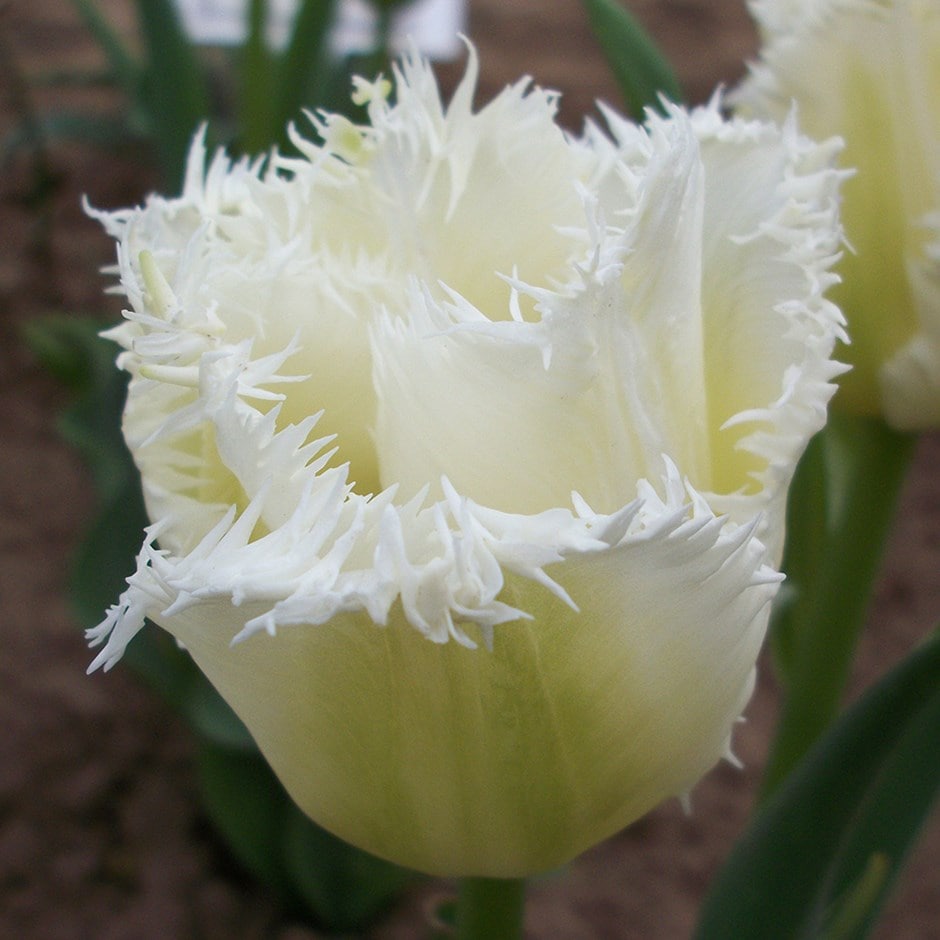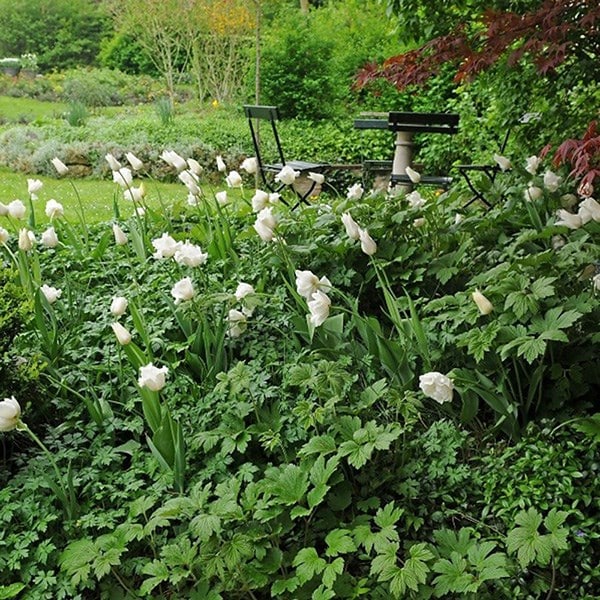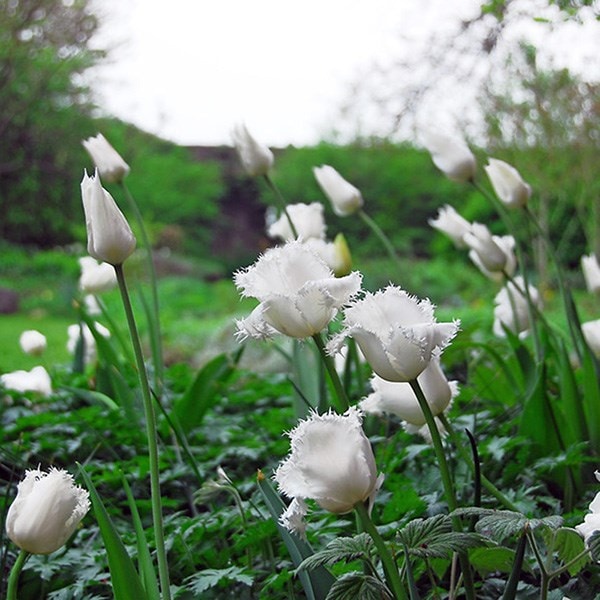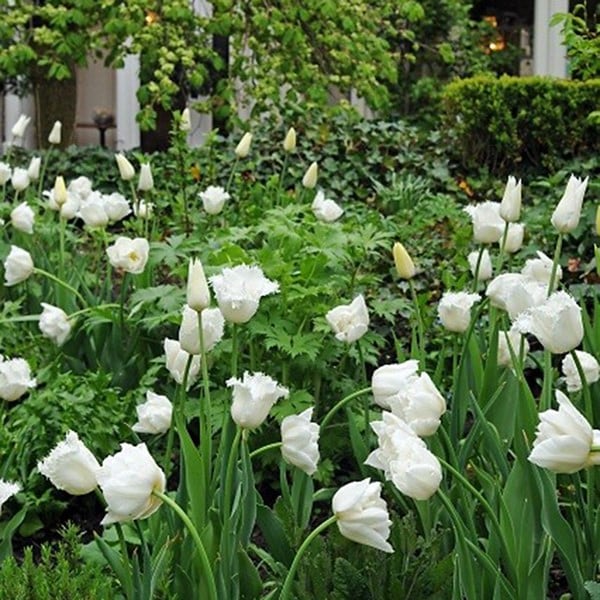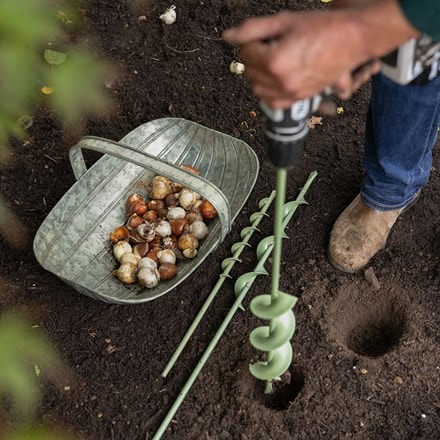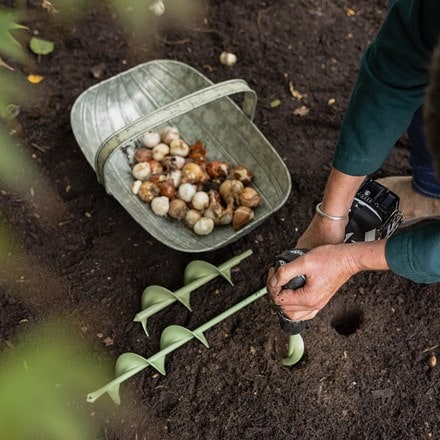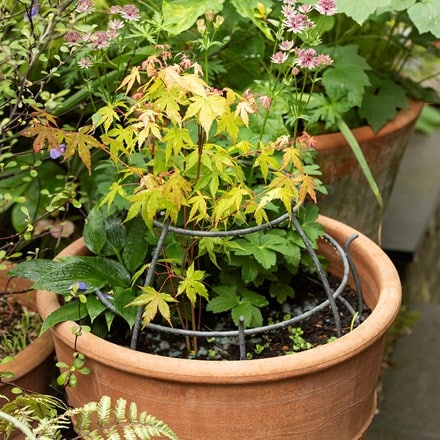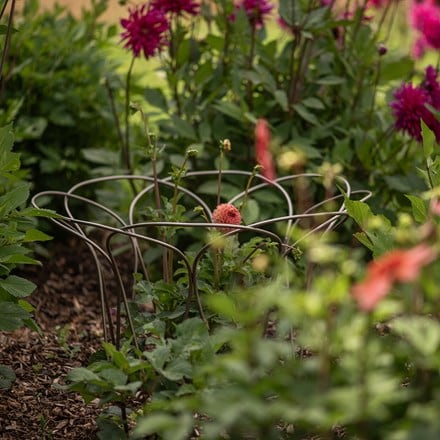Tulipa 'Honeymoon'
fringed tulip bulbs
- 7 × bulbs
- £7.99 £1.14 each
- available to order from summer
- 21 × bulbs
- £22.00 £1.05 each
- available to order from summer
Delivery options
- Bulbs (only) £4.99
- Position: full sun
- Soil: moderately fertile, moist but well-drained soil, or general purpose compost for containers
- Rate of growth: average
- Flowering period: April
- Hardiness: fully hardy
- Bulb size: 11/12
Fringed white blooms stand out against grey-green foliage, adding texture and elegance to late spring displays. Tulipa 'Honeymoon' produces sturdy stems that hold up well in the garden and as cut flowers, making it an excellent choice for borders, containers, and floral arrangements.
The finely serrated petal edges catch the light, creating a shimmering effect that enhances mixed plantings. This tulip thrives in well-drained soil and a sunny position, returning reliably each year if left undisturbed.
For a striking contrast, plant alongside deep purple or pastel-hued tulips. Deadhead spent flowers but allow the foliage to die back naturally to replenish the bulbs for the following season.
The finely serrated petal edges catch the light, creating a shimmering effect that enhances mixed plantings. This tulip thrives in well-drained soil and a sunny position, returning reliably each year if left undisturbed.
For a striking contrast, plant alongside deep purple or pastel-hued tulips. Deadhead spent flowers but allow the foliage to die back naturally to replenish the bulbs for the following season.
Using fresh, good-quality compost, plant bulbs in pots from September to November. For borders, we advise waiting until after the first frosts (typically mid-October to early December depending on your location) to reduce the risk of potential disease such as Tulip Fire.
Plant bulbs 15-20cm (6-8in) deep and 10-15cm (4-6in) apart in fertile, well-drained soil. Alternatively, allow 7-9 bulbs per 30cm sq or 60-75 bulbs per m². If you’re unable to plant your bulbs immediately, they can be stored in a cool environment with good air circulation. Remove all the packaging and place them in a loose-weave jute sack before labelling and hanging up in a dry, unheated garden shed or well-ventilated greenhouse.
In spring, when the plants are in active growth, apply a high-potash fertiliser (like Tomorite) each week until the leaves start to die back. Pinch off the spent flower heads as the petals fall, and let the stem and foliage die back naturally. The bulbs can then be lifted and discarded, or cleaned, dried and stored (as before) for replanting the following autumn.
Plant bulbs 15-20cm (6-8in) deep and 10-15cm (4-6in) apart in fertile, well-drained soil. Alternatively, allow 7-9 bulbs per 30cm sq or 60-75 bulbs per m². If you’re unable to plant your bulbs immediately, they can be stored in a cool environment with good air circulation. Remove all the packaging and place them in a loose-weave jute sack before labelling and hanging up in a dry, unheated garden shed or well-ventilated greenhouse.
In spring, when the plants are in active growth, apply a high-potash fertiliser (like Tomorite) each week until the leaves start to die back. Pinch off the spent flower heads as the petals fall, and let the stem and foliage die back naturally. The bulbs can then be lifted and discarded, or cleaned, dried and stored (as before) for replanting the following autumn.
- Humans: Harmful if eaten; skin allergen; Pets: Ornamental bulbs - not to be eaten
